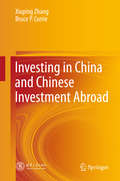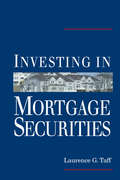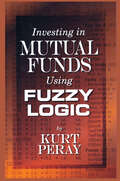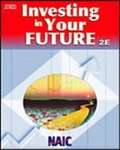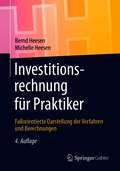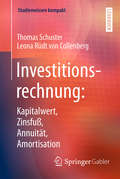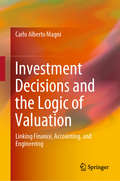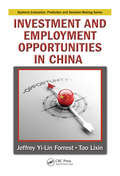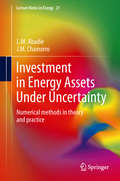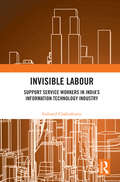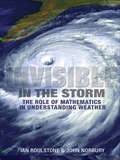- Table View
- List View
Investigations in Number, Data, and Space Student Activity Book
by Pearson Scott ForesmanNIMAC-sourced textbook
Investigations in Number, Data, and Space Student Activity Book
by Pearson Scott ForesmanNIMAC-sourced textbook
Investigations in Number, Data, and Space Student Activity Book
by Pearson Scott Foresman. TercNIMAC-sourced textbook
Investigations in Number, Data, and Space Student Activity Book [Grade 2]
by Scott ForesmanNIMAC-sourced textbook
Investigations in Number, Data, and Space Student Activity Book [Grade 3]
by Pearson EducationTextbook.
Investigations in Number, Data, and Space Student Math Handbook
by Dale SeymourNIMAC-sourced textbook
Investigations in Number, Data, and Space Student Math Handbook
by Economopoulos RussellNIMAC-sourced textbook
Investigations in Number, Data, and Space Student Math Handbook
by Economopoulos RussellNIMAC-sourced textbook
Investigations in Number, Data, and Space Student Math Handbook
by Pearson EducationNIMAC-sourced textbook
Investigations in Number, Data, and Space Student Math Handbook
by Pearson Scott Foresman Terc FirmNIMAC-sourced textbook
Investigations in Number, Data, and Space Student Math Handbook [Grade 5]
by Pearson Scott ForesmanTextbook.
Investing in China and Chinese Investment Abroad
by Xiuping Zhang Bruce P. CorrieThe book provides a study of the investment environment for international enterprises in China and overseas investment by Chinese enterprises. Applying statistical methods and up-to-date data analysis, it examines every aspect of the investment environment in China. The author’s ideas are further illustrated with 39 figures and diagrams. Its 18 chapters discuss topics ranging from history, the current situation and problems of foreign investment in China, to China’s policies for attracting foreign investment, the top 500 global companies in China, urban competitive analysis and multinational corporations in Beijing. It also analyzes Chinese investment in foreign countries. It is a valuable investment guide, and is also a useful reference resource for academic research and teaching related to international business and the Chinese economy.
Investing in Mortgage Securities
by Laurence G. TaffProviding the expertise of an internal business consultant to one of the largest issuers of mortgage securities, Investing in Mortgage Securities serves as a high-level introduction to mortgage securities presented within the framework of fixed income securities. It presents institutional investors, portfolio managers, traders, and sophisticated in
Investing in Mutual Funds Using Fuzzy Logic
by Kurt PerayFuzzy Logic is an analytical tool used in the modeling of those phenomena that fall outside the scope of exact sciences. It is used in the analysis of complex and highly nonlinear processes, where mathematical models or standard classic logic cannot define conditions inherent to such processes, e.g. human thinking.Kurt Peray's detailed analysis of the new approaches and techniques for Risk Control and Portfolio Asset Allocation - which uses the principles of Fuzzy Logic - helps you to make decisions as to when to buy, hold or sell. While making independent and educated decisions, you will be able to hedge your portfolio from the volatile forces in the market, and will offset the erosive impact of inflation and taxation.In this electronic age, investors have quick access to important information relevant to the decision process. The guidelines and formulas that serve as foundations to the Fuzzy Logic approach gives you the ability to build customized programs. Investing in Mutual Funds Using Fuzzy Logic is for the individual who wants to invest in financial instruments that will provide a return for growth. With the investment approach he devised, Peray guides the you towards achieving your investment goals.
Investing in Your Future
by National Association of Investors CorporationThis practical and accessible guide explains the benefits of long-term investment, illustrates how to evaluate mutual funds and corporations, and walks through the stock selection guide developed by BetterInvesting. The worksheets and career advice suggest the book could also be used in community college courses. The second edition devotes an entire chapter to stock selection. Annotation ©2007 Book News, Inc., Portland, OR (booknews.com)
Investitionsrechnung für Praktiker: Fallorientierte Darstellung der Verfahren und Berechnungen
by Bernd Heesen Michelle Julia HeesenDas Werk stellt die klassischen Fragen der Investitionsrechnung an einem Excel-basierten mehrperiodischen Beispiel-Unternehmen im Detail dar. Während die für die Praxis weniger relevanten statischen Ansätze nur kurz dargestellt werden, liegt der Schwerpunkt auf den dynamischen Ansätzen und daraus abzuleitenden Kennzahlen für die detaillierte Analyse aus verschiedenen Blickwinkeln. Das Buch richtet sich an Praktiker, die Investitionen und ih unter Contracts/Rightsre Finanzierung planen, begleiten und überprüfen sowie an Studierende, die ein praktisches Verständnis betriebswirtschaftlicher Zusammenhänge erlangen möchten.
Investitionsrechnung: Kapitalwert, Zinsfuß, Annuität, Amortisation
by Thomas Schuster Leona Rüdt von CollenbergDieses Lehrbuch behandelt die Grundlagen der Investitionsrechnung. Es vermittelt die einschlägigen Fachbegriffe im Gebiet der Investitionstheorie und macht mit den wichtigsten Modellen der Investitionsrechnung vertraut. Es werden die Kapitalwertmethode, die interne Zinsfußmethode, die Annuitätenmethode und die dynamische Amortisationsdauermethode dargestellt. Ein Kapitel über die Bestimmung des Kalkulationszinssatzes rundet den Inhalt ab. Das Buch gibt Hinweise für die korrekte Auswahl eines Investitionsrechenverfahrens unter Berücksichtigung der betrieblichen Gegebenheiten. Die Leser erhalten anhand von zahlreichen Beispielen einen Einblick in die angewandten Verfahren der Investitionsrechnung in der Unternehmenspraxis.Kurze Lerneinheiten, übersichtliche didaktische Module sowie die begleitende Lernkontrolle sorgen für eine nachhaltige Wissensvermittlung. Das Buch richtet sich damit an alle, die sich mit Fragen der Investitionsrechnung im Rahmen ihrer Aus- und Weiterbildung (auch im Nebenfach) sowie ihrer beruflichen Praxis auseinandersetzen.
Investment Decisions and the Logic of Valuation: Linking Finance, Accounting, and Engineering
by Carlo Alberto MagniThis book presents a new approach to the valuation of capital asset investments and investment decision-making. Starting from simple premises and working logically through three basic elements (capital, income, and cash flow), it guides readers on an interdisciplinary journey through the subtleties of accounting and finance, explaining how to correctly measure a project’s economic profitability and efficiency, how to assess the impact of investment policy and financing policy on shareholder value creation, and how to design reliable, transparent, and logically consistent financial models.The book adopts an innovative pedagogical approach, based on a newly developed accounting-and-finance-engineering system, to help readers gain a deeper understanding of the accounting and financial magnitudes, learn about new analytical tools, and develop the necessary skills to practically implement them. This diverse approach to capital budgeting allows a sophisticated economic analysis in both absolute terms (values) and relative terms (rates of return), and is applicable to a wide range of economic entities, including real assets and financial assets, engineering designs and manufacturing schemes, corporate-financed and project-financed transactions, privately-owned projects and public investments, individual projects and firms. As such, this book is a valuable resource for a broad audience, including scholars and researchers, industry practitioners, executives, and managers, as well as students of corporate finance, managerial finance, engineering economics, financial management, management accounting, operations research, and financial mathematics. It features more than 180 guided examples, 50 charts and figures and over 160 explanatory tables that help readers grasp the new concepts and tools. Each chapter starts with an abstract and a list of the skills readers can expect to gain, and concludes with a list of key points summarizing the content.
Investment Strategies Optimization based on a SAX-GA Methodology
by Rui F.M.F. Neves Nuno C.G. Horta António M.L. CanelasThis book presents a new computational finance approach combining a Symbolic Aggregate approximation (SAX) technique with an optimization kernel based on genetic algorithms (GA). While the SAX representation is used to describe the financial time series, the evolutionary optimization kernel is used in order to identify the most relevant patterns and generate investment rules. The proposed approach considers several different chromosomes structures in order to achieve better results on the trading platform The methodology presented in this book has great potential on investment markets.
Investment and Employment Opportunities in China (Systems Evaluation, Prediction, and Decision-Making #9)
by Jeffrey Yi-Lin Forrest Tao LixinPresenting the most recent statistical data, Investment and Employment Opportunities in China provides first-of-its-kind coverage of the regional economic, industrial, investment, and employment structures in China. After establishing the theoretical foundation, the rest of the book utilizes the model and the methodology presented by the authors to
Investment in Energy Assets Under Uncertainty
by L. M. Abadie J. M. ChamorroThis book aims to provide a rigorous yet pragmatic approach to the valuation and management of investments in the energy sector. Time and uncertainty pervade most if not all issues relevant to energy assets. They run from the early stage of prototype and demonstration to the ultimate abandonment and decommissioning. Risk in particular appears in several areas; thus, one can distinguish technical risk from financial risk. Furthermore, the extent to which one can react to them is different (just think of price risk and regulation risk). Markets in general, and financial markets in particular, regularly put a price on a number of assets which differ in their return/risk characteristics. And academia has developed sound financial principles for valuation purposes in a number of contexts. Nonetheless, the physical characteristics of the assets involved also play a key role in their valuation if only because of the restrictions that they entail. There are some instances in which the practitioner/researcher is able to come up with an analytical solution to the valuation problem. Typically, however, these instances are limited because of their relying on stylized facts or idealized frameworks. Unfortunately, many relevant instances lack analytical solutions, so one must resort to numerical methods. The book clearly explains how to implement them in a meaningful way. Their usefulness is further enhanced when numerical estimates of relevant parameters are derived from actual market prices (as long as these are available and reliable). The book starts from the basics of valuation in a dynamic, certain context. The second part then considers uncertainty and introduces a number of useful results and tools to grapple effectively with it. The last part applies these tools to the valuation of energy assets in a sequential manner, i. e. by considering one, two and three sources of risk. The last chapter provides examples of joint optimal management and value maximization in conventional power plants.
Investors’ Preferences in Financing New Ventures: A Data Mining Approach to Equity
by Caterina Lucarelli Francesco James MazzocchiniThis book aims at providing an empirical understanding of the main drivers affecting investors’ preferences in financing new ventures through equity crowdfunding (ECF) and determining fundraising campaign success. ECF is increasing in prominence as a route for new ventures in obtaining external financial resources. To raise capital, entrepreneurs are required to convey quality signals of their proposals with real-time information and knowledge sharing. This book advances knowledge in entrepreneurial finance by investigating the factors that affect individuals’ decisions to participate in ECF. The authors adopt a data mining approach to extract publicly available information from a multitude of crowdfunding platforms across different countries, producing a unique dataset. The book uses an innovative hybrid analysis to generate knowledge patterns creating data-driven models on one hand, and on the other test research hypotheses adopting statistical models to investigate empirical evidence in line, or in contrast, with the extant literature. The book also integrates organizational theories to examine the extent to which ECF platform managers follow a strategy of isomorphism in their choice of information disclosure. The final part of the book discusses how signals are interpreted by investors, how these affect financing preferences, and ultimately the successful completion of a fundraising campaign. The book will be of interest to academics and practitioners in entrepreneurial finance, FinTech, and investment behaviour.
Invisible Labour: Support Service Workers in India’s Information Technology Industry
by Indranil ChakrabortyThis book investigates the life, working conditions, and urban experiences of support service workers, such as janitors, security guards, culinary workers and carpool drivers, in the information technology (IT) sector of India. Largely omitted from academic discourse, support service workers are crucial to the Indian IT industry. Drawing on interviews with such workers in seven Indian cities with a large concentration of software service companies, this volume: Uses quantitative and qualitative analyses to map and assess workers' responses to migration from rural occupations to a modern urban employment setting; Explores the everyday grind of migrant workers in the context of the homogenizing effects of globalization in an alienating urban environment and discusses how their dislodgment from the structures of rural life – gender and caste roles – has placed them in a space of contestation between traditions and the opportunities and challenges offered by digital society in the form of freedom, individualism, flexibility and innovation; Traces the evolution of new areas of class, and identity formations, as well as the hegemonic relations within that ethos imposed by contractors and corporations. The volume will be of great interest to scholars and researchers of sociology and social anthropology, urban studies, development studies, labour studies, social exclusion and South Asian studies.
Invisible in the Storm
by John Norbury Ian RoulstoneInvisible in the Storm is the first book to recount the history, personalities, and ideas behind one of the greatest scientific successes of modern times--the use of mathematics in weather prediction. Although humans have tried to forecast weather for millennia, mathematical principles were used in meteorology only after the turn of the twentieth century. From the first proposal for using mathematics to predict weather, to the supercomputers that now process meteorological information gathered from satellites and weather stations, Ian Roulstone and John Norbury narrate the groundbreaking evolution of modern forecasting. The authors begin with Vilhelm Bjerknes, a Norwegian physicist and meteorologist who in 1904 came up with a method now known as numerical weather prediction. Although his proposed calculations could not be implemented without computers, his early attempts, along with those of Lewis Fry Richardson, marked a turning point in atmospheric science. Roulstone and Norbury describe the discovery of chaos theory's butterfly effect, in which tiny variations in initial conditions produce large variations in the long-term behavior of a system--dashing the hopes of perfect predictability for weather patterns. They explore how weather forecasters today formulate their ideas through state-of-the-art mathematics, taking into account limitations to predictability. Millions of variables--known, unknown, and approximate--as well as billions of calculations, are involved in every forecast, producing informative and fascinating modern computer simulations of the Earth system. Accessible and timely, Invisible in the Storm explains the crucial role of mathematics in understanding the ever-changing weather.Some images inside the book are unavailable due to digital copyright restrictions.



